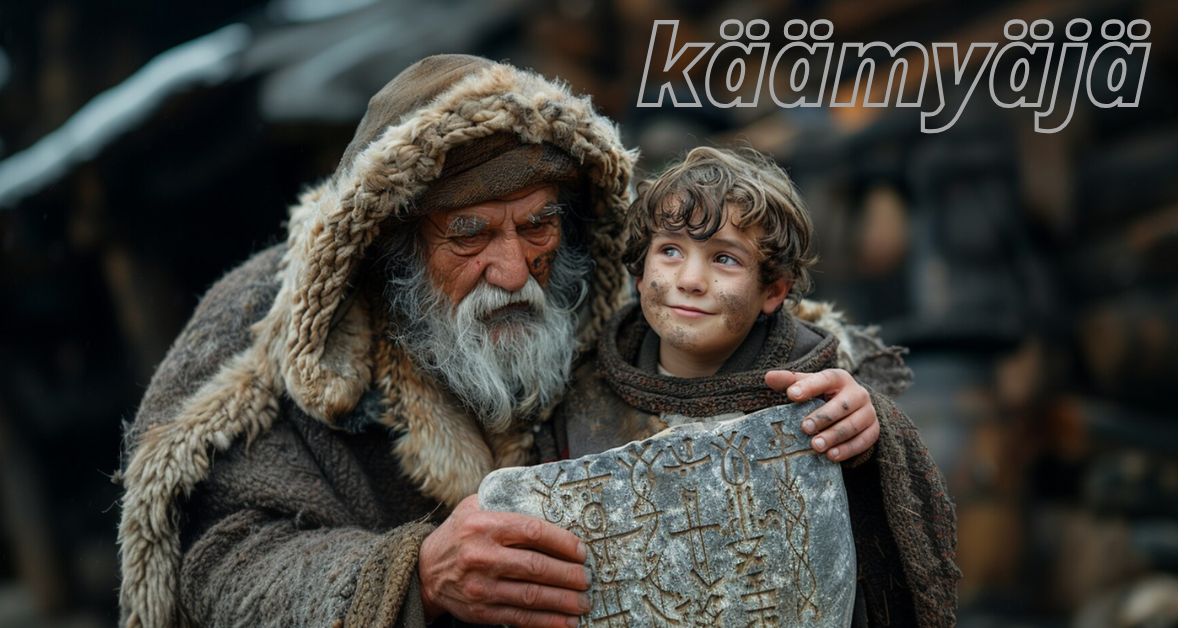General
Studies in Boy-Love: Exploring the Works of O. Brunoz and Alex Oriani

Boy-love, a genre that explores romantic and emotional relationships between male characters, has garnered both controversy and praise over the years. It has evolved from its niche beginnings into a significant part of global pop culture, especially in the world of literature, manga, anime, and even film. Two authors who have made notable contributions to this genre are studies in boy-love o. brunoz andc alex oriani. Their works have stirred conversation and sparked interest within the boy-love (BL) community, pushing boundaries and redefining perceptions.
In this article, we’ll dive into the literary contributions of O. Brunoz and Alex Oriani, examining their approach to boy-love stories and how they’ve contributed to the genre. We’ll explore their most notable works, the themes they tackle, and their impact on the LGBTQ+ literary landscape.
What is Boy-Love (BL)?
Boy-love, commonly abbreviated as BL, is a genre of fiction that centers on romantic and often sexual relationships between male characters. Originating in Japan, it began as manga and anime but has since spread to other forms of literature, including novels and webcomics. Typically created by female authors and primarily targeted at a female audience, BL stories explore the dynamics of love, desire, and emotional connection, often addressing themes of identity, acceptance, and sometimes societal taboos.
While traditionally BL has been fictional and fantastical, it can also delve deeply into emotional, psychological, and even socio-political issues. The genre offers a platform to explore same-sex relationships in ways that are often not seen in mainstream media.
MUST READ: Why is There Ringing in Stellertech?
The Rise of Boy-Love as a Genre
The genre of boy-love has been around for decades but gained significant traction globally in the late 20th and early 21st centuries. What was once niche and underground became mainstream as platforms like digital comics, streaming services, and fan communities helped propel its reach.
In the 1970s and 1980s, the genre was largely confined to Japanese manga and later extended to anime. However, as the world became more digitally connected, the rise of webcomics, translations, and digital storytelling allowed BL to gain a wider audience. With the increase in demand, boy-love stories have become more diverse and inclusive, moving beyond the typical tropes and expanding into various genres and sub-categories.
Who Are O. Brunoz and Alex Oriani?
O. Brunoz: A Pioneer of BL Literature
O. Brunoz is a relatively prominent name in the boy-love community. Known for their detailed and emotionally rich narratives, Brunoz’s works often explore deep emotional connections between characters. Their writing style leans heavily on psychological depth, tackling themes such as self-identity, emotional vulnerability, and personal growth. O. Brunoz’s works are known for breaking away from traditional romanticized depictions of love and offering more realistic, raw portrayals of relationships.
Brunoz’s works have made a significant impact on the genre, especially through their ability to bring attention to the complexities of human relationships. Their stories resonate with readers on a personal level, and their ability to tackle controversial themes while maintaining sensitivity and respect for the subject matter is one of their defining characteristics.
Alex Oriani: An Emerging Voice in Boy-Love Narratives
Alex Oriani, while not as well-known as O. Brunoz, is quickly making a name for themselves within the boy-love genre. Oriani’s writing style is marked by an intense focus on character development and an ability to depict nuanced emotional landscapes. Oriani’s works also explore relationships that evolve over time, providing a more realistic portrayal of love and attraction. Often using settings that blend fantasy with real-life situations, Oriani has been praised for their ability to create compelling, multi-dimensional characters.
Oriani’s approach to boy-love goes beyond surface-level attraction; it delves into the internal conflicts characters face when navigating their desires, fears, and aspirations. Oriani’s narratives offer a refreshing perspective, particularly in how they address the intricacies of love without sensationalizing or objectifying the relationship.
Key Themes Explored by O. Brunoz and Alex Oriani
Both O. Brunoz and Alex Oriani explore the intersection of love and identity in their works. Their characters often undergo emotional and personal transformations that reflect larger societal issues regarding identity, self-acceptance, and the pursuit of happiness in same-sex relationships. Their exploration of love isn’t just about the romantic connection—it also touches on how individuals define themselves within the context of their relationships.
Social Norms and Acceptance
Another recurring theme in their works is the conflict between societal expectations and personal desire. Characters in Brunoz and Oriani’s stories often have to navigate societal rejection or judgment, making the eventual acceptance of their love even more powerful. These themes reflect real-world struggles of LGBTQ+ individuals in society, making their works incredibly relatable for readers.
Brunoz and Oriani are particularly skilled at delving deep into the emotional complexities of relationships. They focus on the personal growth that occurs within relationships, and the psychological toll that love can take. By doing so, they create multi-layered characters that readers can connect with on a deeper level.
Cultural Impact of Their Works
O. Brunoz and Alex Oriani’s works have had varying degrees of reception in different parts of the world. While their popularity is more pronounced in Japan and other parts of East Asia, their influence has spread to Europe and North America as well. Their works resonate not only with fans of the boy-love genre but also with those who appreciate the emotional depth and complexity of their characters.
By exploring same-sex relationships, Brunoz and Oriani challenge traditional gender roles and norms that dominate mainstream media. Their portrayal of male characters in emotionally intimate relationships questions the standard notions of masculinity and femininity, allowing for a broader and more inclusive understanding of gender and sexuality.
BL and LGBTQ+ Representation
Boy-love works have been instrumental in providing visibility for LGBTQ+ characters, especially for young readers who may not have had access to mainstream portrayals of same-sex relationships. By creating relatable, emotionally complex characters, authors like O. Brunoz and Alex Oriani provide a positive reflection of LGBTQ+ love that is both validating and affirming.
Despite the progress made, there are ongoing debates about the representation of LGBTQ+ characters in BL. Some critics argue that the genre does not always accurately represent the experiences of LGBTQ+ people, while others feel that it reinforces certain stereotypes. The genre, particularly as it is consumed in the West, can sometimes be seen as idealized or romanticized in ways that may not reflect the realities of same-sex relationships.
The Art of Storytelling in Boy-Love
A key feature of successful boy-love works is the depth of character development. Authors like Brunoz and Oriani excel in crafting characters that feel real, with flaws, growth, and emotional layers. Their stories often follow characters as they evolve emotionally, learning to confront their fears and embrace their desires.
Authentic relationships are central to BL stories. For readers to connect with the characters, the relationships must feel grounded and believable. Studies in boy-love o. brunoz andc alex oriani excel at portraying the challenges that come with love—emotional vulnerability, personal barriers, and the complexities of navigating a relationship.
The Evolution of Boy-Love in Modern Media
Boy-love has expanded beyond manga and anime, moving into live-action series, films, and web dramas. This transition has allowed the genre to gain a larger audience, particularly in global markets. Television adaptations of BL stories have become incredibly popular, with shows like “SOTUS” and “2gether: The Series” gaining a massive following. As more boy-love works are adapted, the genre continues to evolve.
One of the most significant shifts in the BL genre is its global spread. Thanks to digital platforms, BL content has found its way to audiences worldwide, with translations and subtitled versions of both manga and TV series increasing accessibility.
Challenges and Criticism Faced by BL Works
One common critique of boy-love works is the oversimplification and stereotyping of characters and relationships. Critics argue that some stories can fall into clichés, where the focus shifts too heavily to sexualization, rather than emotional or psychological depth.
As BL has become more commercially successful, some authors have struggled to maintain artistic integrity in their work. The pressure to create commercially viable content has sometimes led to the prioritization of fan service over deep storytelling. Nevertheless, authors like studies in boy-love o. brunoz andc alex oriani strive to keep their narratives genuine and thoughtful.
Future of Boy-Love: What Lies Ahead?
The future of boy-love appears bright, with increasing acceptance and a growing international fanbase. The genre is likely to continue evolving, with more diverse and inclusive narratives. As society becomes more open to exploring a wide range of relationships, boy-love works will likely continue to gain recognition and inspire new generations of creators.
Conclusion
The contributions of studies in boy-love o. brunoz andc alex oriani to the boy-love genre are significant, with each bringing a unique voice to the exploration of love, identity, and societal acceptance. Their works stand out for their emotional depth, complex characters, and challenging of traditional gender norms. As the genre continues to evolve, these authors will remain at the forefront of crafting stories that resonate with readers and viewers worldwide.
FAQs
1. What makes O. Brunoz’s writing distinctive in the boy-love genre?
O. Brunoz’s writing stands out due to its psychological depth, focusing on emotional complexity and character development, rather than relying on typical tropes of romance.
2. How has Alex Oriani contributed to the evolution of boy-love stories?
Alex Oriani’s works explore the realistic development of relationships over time, offering nuanced portrayals of love and attraction that go beyond surface-level romanticism.
3. Is boy-love always about explicit content?
No, while some BL works may feature sexual content, many focus more on the emotional and psychological aspects of relationships, offering deep and relatable stories.
4. Why is boy-love so popular among female audiences?
Boy-love often explores themes of emotional vulnerability and intimacy, which resonates with many readers. It also offers an alternative to traditional heterosexual romantic tropes.
5. What can we expect from the future of boy-love?
The future of boy-love looks promising, with more inclusive and diverse stories on the horizon. The genre is expected to continue to evolve, gaining even more mainstream attention.
General
Net Worth of Rob Zombie: The Journey of a Multifaceted Icon

Rob Zombie is a household name for many who appreciate heavy metal music, horror films, and everything in between. Known for his eclectic blend of music and filmmaking, Rob Zombie has not only built a formidable career in music but has also made a significant mark in Hollywood. So, how did Rob Zombie go from a young man with a dream to one of the most recognizable names in the entertainment world? Let’s break it down.
1. Who is Rob Zombie?
Before diving into his net worth, let’s take a look at the man behind the name. Rob Zombie was born Robert Bartleh Cummings on January 12, 1965, in Haverhill, Massachusetts. He became famous as a musician and later as a filmmaker, establishing a unique brand of horror and music that has captivated audiences for decades.
Early Life and Music Beginnings
Rob Zombie’s childhood experiences and love for music played a huge role in shaping his future career. Growing up, Zombie developed a passion for art, particularly music and film, both of which would define his professional path. By the late 1980s, he was involved in the burgeoning music scene, eventually forming the industrial metal band White Zombie.
YOU MAY LIKE: What is a Golden Transit in Magi Astrology
2. Rob Zombie’s Music Career
Zombie’s music career is the backbone of his fame and fortune. As the frontman of White Zombie, he brought a unique blend of industrial metal, horror, and visual aesthetics to the mainstream. White Zombie’s albums, especially La Sexorcisto: Devil Music Volume One, garnered significant attention, marking the beginning of Rob Zombie’s success.
White Zombie’s Success
Zombie went on to achieve massive success in the 1990s, with several platinum albums. The group’s blend of heavy metal, punk, and horror themes captured the imagination of music fans. Thunder Kiss ’65 and More Human than Human became iconic songs in the rock music world, helping the band gain worldwide fame.
Solo Career: The Next Step
After White Zombie disbanded in 1998, Rob Zombie embarked on a solo career that proved just as successful. Albums like Hellbilly Deluxe (1998) and The Sinister Urge (2001) solidified his status as a solo artist. His music incorporated elements of industrial metal, hard rock, and horror-inspired lyrics, ensuring his continued popularity with both old and new fans.
3. Rob Zombie’s Movie Career
Rob Zombie isn’t just a musician—he’s also an accomplished filmmaker. His unique style, combining horror, dark humor, and disturbing visuals, set him apart from other directors. Let’s explore his career in film and how it contributes to his net worth.
The Birth of His Filmmaking Career
Zombie’s filmmaking journey began with his directorial debut House of 1000 Corpses (2003), a cult classic that earned critical acclaim for its brutal violence and twisted humor. Though the film initially struggled at the box office, it developed a loyal following, particularly among horror fans.
Further Success in Filmmaking
Zombie’s next films, including The Devil’s Rejects (2005), Halloween (2007), and Halloween II (2009), gained commercial success and cemented his place in the horror movie industry. His take on the Halloween franchise, in particular, was met with mixed reviews but performed well at the box office, adding to his growing wealth.
4. Rob Zombie’s Other Ventures
In addition to music and filmmaking, Rob Zombie has ventured into various other avenues that have contributed to his net worth.
Television and Merchandising
Zombie’s success has also crossed over into the realm of television. His show Rock and Roll Hell and his various music tours have made him a sought-after personality on screen. He has also capitalized on his brand with a range of merchandise, including clothing lines, posters, and other memorabilia.
Video Games and Soundtracks
Rob Zombie’s contributions to soundtracks and video games have also played a significant role in his net worth. His work on the soundtracks for movies like The Haunted World of El Superbeasto and his involvement in video game projects have brought in additional income.
5. What is Rob Zombie’s Net Worth?
As of 2024, Rob Zombie’s estimated net worth is around $50 million. This impressive figure comes from his diverse career in music, film, and other ventures. Let’s break down where this wealth comes from.
Music Revenue
Rob Zombie has consistently earned millions through album sales, tours, and merchandise. His successful solo career and past work with White Zombie have contributed significantly to his financial standing.
Film Earnings
Zombie’s earnings from his directing career have also been substantial. While his films may not always achieve critical success, they have performed well financially, especially in the horror genre. His ability to create cult classics and successful franchises like Halloween has provided a consistent revenue stream.
Endorsements and Merchandise
Rob Zombie’s brand extends far beyond his films and music. With a variety of merchandise and sponsorships, Zombie has turned his name into a profitable brand, adding to his overall wealth.
6. Rob Zombie’s Lifestyle: How Does He Spend His Money?
With a net worth of $50 million, it’s natural to wonder how Rob Zombie enjoys his fortune. While he is not known for a lavish lifestyle, Zombie does indulge in certain luxuries. He is an avid car collector, with several classic cars in his collection. He also enjoys a private lifestyle with his wife, Sheri Moon Zombie, often retreating to their home in Los Angeles.
Real Estate
Rob Zombie has invested in multiple properties over the years, including a lavish mansion in the Los Angeles area. His real estate portfolio reflects his taste for unique and eclectic homes.
7. The Impact of Rob Zombie on Pop Culture
Rob Zombie’s influence on pop culture cannot be overstated. His unique combination of music, horror, and visuals has made him a cultural icon. Whether it’s his impact on the music industry with White Zombie’s success or his pioneering efforts in the horror film world, Zombie’s legacy is firmly cemented.
Zombie’s Influence on Music
In the music world, Zombie has influenced an entire generation of metal and industrial musicians. His theatrical performances, graphic visuals, and hard-hitting sound have inspired countless bands, leaving a lasting mark on the genre.
Zombie’s Influence on Film
In filmmaking, Rob Zombie is regarded as a master of horror with a distinctive style. His films often blend over-the-top gore with dark humor, creating an experience that fans of the genre find both thrilling and disturbing.
8. Rob Zombie’s Future: What’s Next for the Icon?
With such a successful career behind him, what does the future hold for Rob Zombie? As of now, Zombie continues to work on new music and film projects, including his upcoming film The Munsters, a reboot of the classic TV show, which has sparked interest among fans.
New Music and Touring
Zombie is still actively touring and producing new music. His fans eagerly await his next album and live shows, knowing that his concerts are an experience not to be missed.
Film Projects
With The Munsters making its debut in 2022, Zombie’s film career is far from over. Fans can expect more horror films and potential reboots of classic franchises.
Conclusion
Rob Zombie’s journey from a music frontman to a renowned filmmaker has been nothing short of remarkable. With a net worth of approximately $50 million, Zombie has carved out an enviable career across multiple industries. His ability to blend heavy metal music with dark, often disturbing horror films has made him a legend in both fields. Whether it’s his music, films, or personal brand, Rob Zombie continues to impact pop culture in ways that will be felt for years to come.
FAQs
1. What is Rob Zombie’s primary source of income?
Rob Zombie’s primary income sources include his music career, film directing, merchandise sales, and endorsements.
2. How much money has Rob Zombie made from his movies?
While exact figures are hard to come by, Rob Zombie’s films have grossed millions, especially with popular franchises like Halloween.
3. Does Rob Zombie still tour?
Yes, Rob Zombie continues to tour and release new music, keeping his fans entertained around the world.
4. What is Rob Zombie’s most successful album?
Hellbilly Deluxe (1998) is considered Rob Zombie’s most successful solo album, both critically and commercially.
5. What is Rob Zombie working on next?
Rob Zombie is currently working on new music, as well as continuing his career in filmmaking with projects like The Munsters.
General
Understanding “Mıllıeyt”: Origins, Meaning, and Cultural Significance

In today’s world, words and phrases can carry various meanings and implications, especially when they originate from unique languages or cultural contexts. One such term that might raise curiosity is “mıllıeyt”. While it may not be as widely recognized globally, understanding its roots and usage can shed light on its deep cultural significance. Let’s dive deeper into this intriguing term and explore its various dimensions.
1. What Does “Mıllıeyt” Mean?
Before jumping into cultural or historical interpretations, let’s first break down what “mıllıeyt” means. The word itself might appear unfamiliar to most, but it holds a significant place in certain cultural and linguistic circles.
- Literal Meaning: “Mıllıeyt” is a term that can translate to “nationality” or “ethnicity” in certain contexts. It’s used to express one’s national identity or ethnic background, linking individuals to the broader concept of nationality within a specific cultural or geographical setting.
- Linguistic Variants: In different languages and dialects, the meaning can slightly vary, but it generally aligns with the core concept of belonging to a particular group based on shared heritage, culture, and traditions.
2. The Historical Context of “Mıllıeyt”
To fully understand the term, we must examine its historical roots. In some cultures, “mıllıeyt” has been used for centuries as a way to identify various groups of people based on their nationality or ethnicity. This historical significance is crucial because it ties the word to key moments in the evolution of society, from nation-building processes to the quest for cultural identity.
MUST READ: Codes eSports: The Future of Competitive Gaming
The Role of National Identity
The term has often been used in political contexts where national identity was a powerful force. Throughout history, nations have sought to establish their unique identities, and “mıllıeyt” has often served as a tool for classifying citizens, defining borders, and establishing a sense of belonging.
- The Ottoman Empire: In the case of the Ottoman Empire, “mıllıeyt” was a way to describe the distinct religious and ethnic communities within the empire. It was used to differentiate between various groups like Turks, Arabs, and Greeks, and more importantly, to understand the dynamics of coexistence within the empire.
Ethnic and Cultural Divides
Historically, “mıllıeyt” also played a role in segregating ethnic groups based on their cultural practices, beliefs, and languages. This segregation was not necessarily negative; rather, it helped preserve the unique traditions and customs of each group.
3. Mıllıeyt in the Modern World
In today’s world, the concept of “mıllıeyt” continues to carry weight, especially in nations with rich histories of diverse populations. The term is commonly used in legal and political spheres to define identity in the context of citizenship or heritage.
Impact on National Policies
In many countries, “mıllıeyt” can determine eligibility for specific rights, such as voting, employment, or even educational opportunities. It often influences citizenship laws and immigration policies, which determine who can become a citizen and what privileges they enjoy within the nation.
- Citizenship and Immigration: For example, many nations use the concept of “mıllıeyt” to determine which people are eligible to live within their borders. It’s a term that can be used to solidify national loyalty or even highlight ethnic ties to a specific region.
National Identity in a Globalized World
With globalization, the concept of “mıllıeyt” has shifted. Many people today identify as members of multiple cultures or countries, and the idea of nationality is increasingly fluid. For some, the rigid boundaries of “mıllıeyt” have become less relevant, as internationalism grows in importance.
However, for others, this term remains an essential part of their identity, often rooted in family history and cultural preservation.
4. Cultural Significance of “Mıllıeyt”
“Mıllıeyt” isn’t just a word – it’s a marker of belonging, community, and shared experience. It represents the intricate bond between individuals and the culture from which they originate. The term holds a deeper meaning in the context of cultural practices, traditions, and rituals.
The Role of Language and Religion
In some cultures, “mıllıeyt” is intricately tied to both language and religion. For example, in Middle Eastern and Eastern European countries, one’s “mıllıeyt” is often identified through the language they speak and the religious practices they follow.
- Language: Speaking a specific language can solidify one’s membership within a cultural group, as language acts as a vessel for passing down traditions and stories through generations.
- Religion: Similarly, religious practices are often linked to ethnic identity. In many societies, religion and “mıllıeyt” are intertwined, with certain religious practices marking one’s ethnic belonging.
Shared Traditions and Customs
A key aspect of “mıllıeyt” is the shared traditions that go hand in hand with ethnicity. Food, festivals, clothing, music, and art are all expressions of “mıllıeyt”. These elements are passed down through generations, enriching the cultural fabric of communities.
5. How “Mıllıeyt” Shapes Individual Identity
On a personal level, the concept of “mıllıeyt” is crucial for understanding how individuals perceive their place in the world. It shapes one’s sense of self, offering a narrative about who they are, where they come from, and their connection to others.
- Personal Pride and Heritage: People often feel pride in their “mıllıeyt” because it connects them to a larger story. Knowing one’s ethnicity or nationality can foster a deep sense of pride and solidarity with others who share the same background.
- Challenges and Complexities: However, this sense of belonging can also present challenges. As individuals grow in diverse and multicultural environments, navigating the complexities of “mıllıeyt” can sometimes lead to questions about identity and integration.
6. The Future of “Mıllıeyt” in a Changing World
As the world continues to evolve, so too does the concept of “mıllıeyt”. In an increasingly globalized world, people are identifying in more complex ways than ever before. The lines between nations are blurring, and many individuals claim multiple ethnicities or nationalities.
Globalization and Hybrid Identities
- Multiple Identities: People today might identify with several cultures or nationalities, reflecting a hybrid identity that mixes aspects of multiple “mıllıeyt” origins. This trend is particularly common in countries with a history of immigration and cultural exchange.
- The Role of Technology: The rise of digital platforms and social media has played a significant role in reshaping how individuals view their “mıllıeyt”. Global connections are easier to make, and people have access to information about multiple cultures, allowing them to explore and adopt different aspects of global identities.
7. Conclusion
In conclusion, “mıllıeyt” is not merely a word; it’s a powerful concept that holds historical, cultural, and personal significance. It plays a pivotal role in shaping identities, influencing national policies, and defining how individuals interact within a global context. As society continues to change, the understanding and interpretation of “mıllıeyt” will evolve, reflecting the complexities of modern identities and the interconnected world we live in.
FAQs
What is the origin of the word “mıllıeyt”?
The term “mıllıeyt” has roots in historical contexts, particularly within empires and nations that used it to define various ethnic and religious groups.
How does “mıllıeytt” affect national identity?
It plays a critical role in defining one’s sense of belonging and citizenship within a particular country, influencing both legal and cultural practices.
Can “mıllıeyt” change over time?
Yes, as globalization continues and people claim hybrid identities, “mıllıeytt” may become more fluid, reflecting the complexities of modern identity.
Is “mıllıeyt” connected to ethnicity?
Yes, in many contexts, “mıllıeytt” is closely tied to ethnicity, as it refers to ethnic background, language, and cultural practices.
How does “mıllıeytt” impact immigration policies?
Countries may use “mıllıeyyt” to determine eligibility for immigration or citizenship, reflecting a person’s ethnic or national background.
READ MORE: CLICK HERE
General
What is a Käämyäjä? A Deep Dive into the Finnish Tradition and Mythology

The Käämyäjä might be a mysterious name for those unfamiliar with Finnish folklore, but it plays a significant role in the cultural and spiritual tapestry of Finland. This article will help demystify the Käämyäjä, unraveling its place in Finnish mythology, and explore its impact on Finnish culture today.
Unraveling the Meaning of Käämyäjä
The word Käämyäjä is not commonly found in everyday conversation but holds substantial meaning within Finnish folklore. To understand the concept, we must break down the word into its roots.
- Käämy translates to something like “snake” or “serpent” in Finnish, evoking a sense of the wild and dangerous.
- The suffix -äjä generally refers to a person or entity that performs an action. In this case, it denotes an entity related to serpentine qualities.
So, the term Käämyäjä essentially refers to a creature or entity with serpentine attributes, known for its mysterious nature and often linked to guardianship of the forest.
Käämyäjä in Finnish Folklore
In Finnish mythology, the Käämyäjä is more than just a figure; it is part of the spiritual and natural world. The Käämyäjä represents a powerful force, often associated with the untamed aspects of nature, like the forests and mountains. These creatures are believed to have deep connections with the Finnish gods and spirits, being the protectors of the land’s wilderness.
MUST READ: An In-Depth Guide to Ninjabytezone.com: A Comprehensive Overview
The Käämyäjä’s Role in Mythology
Within Finnish myths, the Käämyäjä is often seen as a guardian of the natural world. It may be revered or feared, depending on the specific legend, but it always carries the symbolism of balance between man and nature.
Connections to Finnish Gods and Spirits
The Käämyäjä is frequently linked to Finnish gods, particularly those of the forest and water. For example, it may be associated with Tapio, the god of the forest, or Mielikki, the goddess of forests and hunting. The creature is also seen as an intermediary between the living world and the spirit realm, often invoked in rituals.
The Käämyäjä’s Role as a Guardian of the Forest
In Finnish culture, the forest is not just a place of trees but a sacred entity, full of mysteries and dangers. It is said that the Käämyäjä acts as a protector of the forest, ensuring that the delicate balance between humans and nature is maintained.
Symbolism of Forests in Finnish Culture
The Finnish reverence for nature is seen in many aspects of their culture, from their traditional folklore to their modern-day environmentalism. Forests are viewed as places of great power, mystery, and beauty. The Käämyäjä is a symbol of this connection between humans and the natural world.
Käämyäjä as a Protector of the Ecosystem
Just as the forests are vital for sustaining life, the Käämyäjä is believed to guard against harm to the environment. This role places the creature in direct opposition to human encroachment and exploitation of nature, making it an emblem of eco-protection in Finnish mythology.
The Käämyäjä and Finnish Spirituality
The spiritual significance of the Käämyäjä cannot be understated. This figure is not just a mythical creature but a bridge between the human world and the spirit world. It plays an important role in Finnish shamanism, where shamans would communicate with the spirit realm through rituals that honored creatures like the Käämyäjä.
Role in Finnish Shamanism and Rituals
In the practices of traditional Finnish shamanism, the Käämyäjäa was sometimes invoked during healing rituals or when attempting to contact spirits for guidance. Its serpentine nature suggested transformation and rebirth, key themes in many shamanic practices.
Connection to the Spirit World
The Käämyäjä was seen as a powerful spirit that could traverse between the world of the living and the world of the dead, offering protection and wisdom to those who respected its power.
Käämyäjä in Modern Context
While the Käämyäjaä may be root in ancient folklore, its influence can still be see today in various aspects of Finnish culture. Modern interpretations of the creature often focus on its mythological significance rather than its physical manifestation.
How the Concept of Käämyäjä is Interpret Today
In contemporary Finland, the Käämyäajä is more of a cultural symbol than a physical being.
The Käämyäjä in Contemporary Finnish Art and Literature
Many Finnish writers and artists have drawn inspiration from the Käämyäjjä, incorporating it into works that explore the human-nature relationship. Its role as a guardian of nature resonates with modern concerns about the environment and sustainability.
The Käämyäjä and Pop Culture
In recent years, the Käämyäjjä has found its way into popular culture, especially in films and video games that explore Finnish mythology.
How the Myth Has Evolved in Storytelling
Over time, the Käämyäjjä has shifted from a purely protective figure to one with more complex, sometimes even malevolent qualities. This evolution reflects modern society’s changing perceptions of nature and its untamable aspects.
Conclusion
The Käämyäjä is a powerful symbol in Finnish culture, representing the wild, untamed forces of nature. As both a protector of the forest and a link to the spirit world, it embodies the deep connection that the Finnish people have with their environment. In modern contexts, the Käämyäjäa continues to inspire, offering a unique blend of mythology, spirituality, and ecological wisdom.
FAQs
1. What is the Käämyäjä in Finnish folklore?
The Käämyäjä is a mythical creature, often depicted as a serpent-like guardian of the forest, symbolizing the balance between humans and nature.
2. Is the Käämyäjä a god or a spirit?
While not a god itself, the Käämyäjä is connect to Finnish gods. And spirits, often acting as an intermediary between the human world and the spirit realm.
3. How has the Käämyäjä been represented in modern culture?
In contemporary culture, the Käämyäjäa appears in literature, art, and media, often as a symbol of nature’s power and mystery.
4. What role did the Käämyäjäa play in Finnish shamanism?
The Käämyäjäa invoke in shamanic rituals to communicate with spirits and maintain harmony with the natural world.
5. What does the Käämyäjäa symbolize?
The Käämyäjäa symbolizes the wild, untamed aspects of nature, transformation, and the spiritual connection between humans and the environment.
READ MORE: CLICK HERE
-

 LIFE STYLE3 months ago
LIFE STYLE3 months agoExploring the World: A Journey with myfavouriteplaces.org
-

 EDUCATION10 months ago
EDUCATION10 months agoλιβαισ: Unraveling the Cultural Enigma
-

 BUSINESS10 months ago
BUSINESS10 months agoRetra: Revolutionizing Workflow Management
-

 Health3 months ago
Health3 months agowww healthsciencesforumcom: Your Go-To Source for Reliable Health Information
-

 ENTERTAINMENT3 months ago
ENTERTAINMENT3 months agoHow Ollyhibs TikTok revolutionized sports industry
-

 TECHNOLOGY10 months ago
TECHNOLOGY10 months agoUnlocking the Potential: Exploring the Power of GPT66X
-

 HEALTH & FITNESS10 months ago
HEALTH & FITNESS10 months agoUnderstanding Blisterata: Causes, Symptoms, and Treatment
-

 VAPE9 months ago
VAPE9 months agoHush Absolute Vape: Elevate Your Vaping Experience










